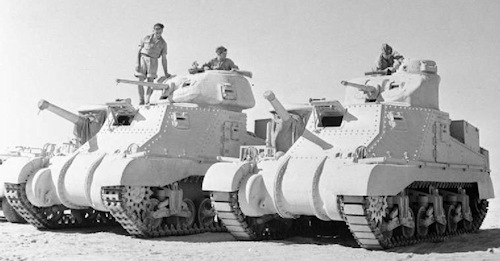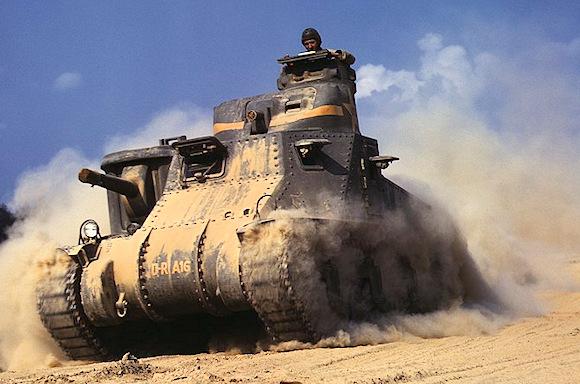THEM3 it was the first US medium tank to be mass-produced. It was conceived and designed around 1940 and became operational in 1941.
The vehicle, in the Second World War, was widely used by the US army and its allies (especially the British). The vehicle performed well in the North African campaign.
The models M3 Americans were denominated Lee, in honor of the Confederate general Robert Edward Lee, while the British ones Grant, in memory of Union General Ulysses Simpson Grant. It should be noted that numerous variants of both the Lee both of Grant.
The vehicle, starting from 1943, was "replaced" by theM4 Sherman. The global production of M3 during the conflict it exceeded 6000 specimens.
The US technicians for the construction of theM3 they were inspired by the medium tank M2 (first produced in 1939). In fact, some properties of the latter medium - mainly suspension and powertrain - provided the basis for the Lee and other armored fighting vehicles.

It should be noted that the design of the vehicle was criticized for a long time by the Americans themselves, in any case they decided to continue with the construction... essentially because they managed to manufacture it quickly and (above all) in large quantities.
In fact, starting from 1941 – according to estimates – up to 220 examples were built per month.
The main defects of the vehicle concerned the placement of the 75 mm cannon (placed in the casemate), the insufficient speed and its encumbrance. Furthermore, “it never had propulsive organs really suitable and fitted a large number of different engines”.1
The British version Grant (in the following photo, left) differed from the US one (in the following photo, right) due to the different shape of the turret, in fact this one (produced in the United Kingdom) was substantially adapted to the needs of the British armored departments: position the radio near the commander.
The primary armament of the tank - as briefly mentioned above - was represented by a 75 mm cannon mounted in a casemate protruding on the right of the vehicle; however inappropriate the arrangement of the piece, it was a weapon that managed admirably to keep up with the guns of the same caliber of the Panzer IV and of the Italian self-propelled 75/18.

The Allied armored vehicle, however, showed a superior shape when shooting compared to German tanks and Italian self-propelled guns, therefore it was more vulnerable in combat (despite the considerable protection).
Subsequently a 75 mm M3 cannon was mounted on the allied tank (the same as theM4 Sherman).
The armament also consisted of a small 37 mm cannon - a good piece according to the technicians - but the caliber proved too weak for combat between armored vehicles.
Importantly, the tank M3, in particular the Grant (also because the idea was British), replaced the Matilda II for the realization of the Canal Defense Light.
I cdl (following photo) they were gods M3 Grant equipped with a special arc lamp turret, intended to illuminate enemy lines during night assaults. The vehicle was mainly used in Germany.
 The Canadians adapted the design of theM3 for their tank Frame. Furthermore, from the hull of theM3 the self-propelled was obtained M7 with 105 mm howitzer, and other vehicles for personnel transport and recovery.
The Canadians adapted the design of theM3 for their tank Frame. Furthermore, from the hull of theM3 the self-propelled was obtained M7 with 105 mm howitzer, and other vehicles for personnel transport and recovery.
The Soviet Union also benefited from the M3 thanks to the law of rents and loans (Lend-Lease Act); almost a thousand tanks were sent to the armored units of the Red Army between 1941 and 1943.
Finally, in the last years of the war, the Lee/Grant was replaced. However, British forces continued to employ it in some scenarios until the end of the conflict.
The medium tank M3 weighed 30 tons (the variant Grant was slightly less in weight). The vessel could count on a crew of 7 men. Length 5,64 m, width 2,72 m and height 3,12 m (il Grant was lower).
The armor was: front of the hull, front, sides and rear of the turret 51 mm. 38 mm sides and rear of the hull. The engine power was 340/400 HP (depending on the variants). The maximum speed was around 42 km/h.
Armament consisted of 1 x 75mm cannon, 1 x 37mm cannon and machine guns Browning M1919A4 7,62 x 63mm.
1 See C. Falessi and B. Pafi, Il LeeMore, in Illustrated history n°145, 1969, p.99
Photo: web












